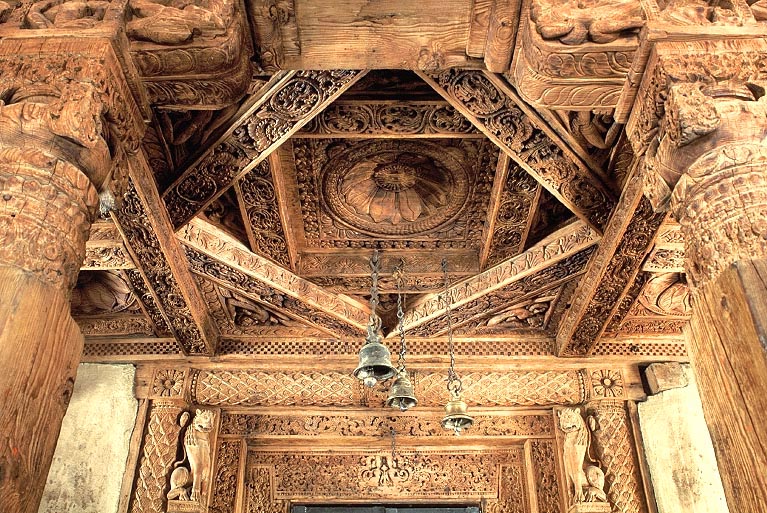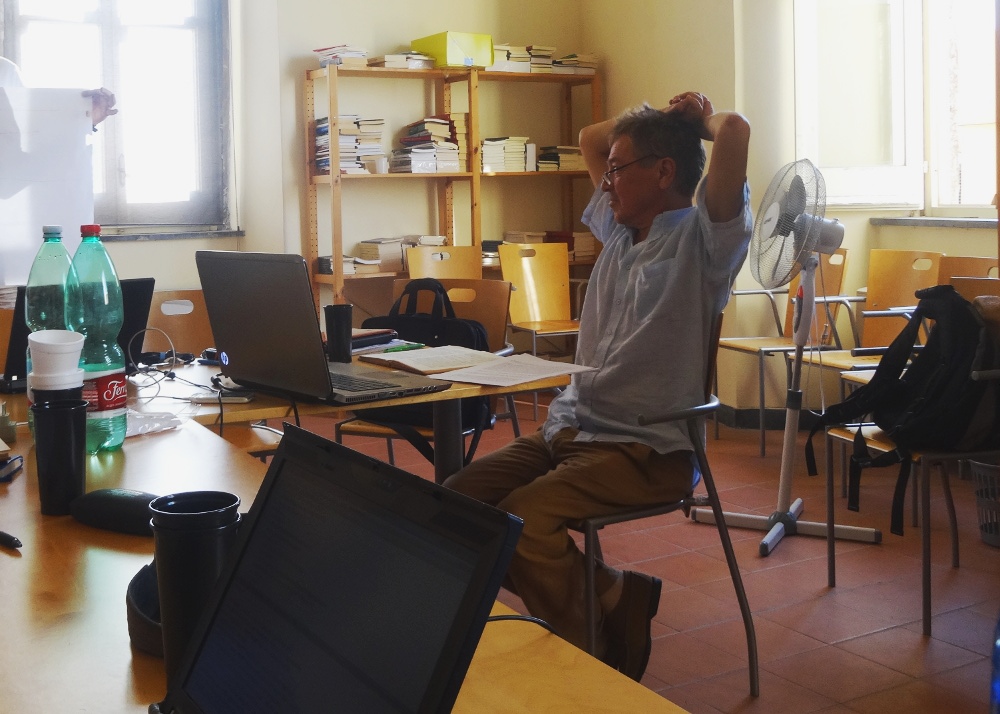Who are the opponents in Kumārila’s Ślokavārttika (henceforth ŚV), chapter on sentence-meaning? And did the ŚV set the standard for all further discussions on the topic?
Category Archives: reuse
Helmut Krasser, the Rebel Sanskritist —UPDATED
I met Helmut Krasser during my Erasmus year in Vienna, back in the Nineties. We sat together (meaning that he, Horst Lasic and Ernst Steinkellner prepared and led the meetings whereas I and other people tried to follow and to add minor points from time to time) at the Academy, reading Jinendrabuddhi’s commentary on Dignāga’s Pramāṇasamuccaya.
How many texts are comprised in the Mimamsa Sastra? And why is it relevant?
(apologies in advance for the lack of diacritics, I am home, ill, with no access to a unicode keyboard)
Purva Mimamsa authors are generally not interested in the topic, whereas several Uttara Mimamsa (i.e. Vedanta) ones deal at length with the status of the Mimamsasastra (I am tempted to say that, similarly, Christians alone are concerned with the unity of the two testaments within the Bible).
A particularly puzzling element, in this connection, is the status of an “intermediate part” of the Mimamsasastra,
The Reuse of Laternendecke in Indian, Tibetan, Central Asian… art: a study by Gerald Kozicz
The Laternendecke (called “Dome of Heaven” in Soper 1947, see image for a wonderful example)

Wooden ceiling of the Mandapa in the Lakshana Devi Temple at Bharmaur, c.700. Photo by Takeo Kamiya
are a way of covering small rooms. In a 2011 article, Gerald Kozicz shows how it has started as a practical solution in areas where wood was scarce, since the Laternendecke made it possible to use also shorter and weaker branches, together with mud. This confirms that its area of origin is Central Asia, from the Aral lake to Punjab. Originally, the Laternendecke had an opening in the middle, which served as a way out for smoke and as a source of light for the room.
In India, this opening has been instead replaced by a circular lotus. This substitution already hints at what happened to the Laternendecke: as can be observed in this wonderful image, this originally practical solution led to wonderful architectonical executions, of great esthetic and symbolic value.
That the Laternendecke has been reused although there was no practical need of it, is due, Kozicz explains, to its symbolic resemantization. The central lotus hints at an axis mundi, around which the cosmos, in the form of concentric squares, rotates. The similarity with other concentric structures, from the Buddha’s nimbus to the maṇḍalas, will not go unnoticed.
Back to Central Asia, the Laternendecke has been reused also where it made no structural sense, e.g., in the caves of Bamiyan, and in other rock- and cave-structures. Since Bamiyan was a central focus in the commercial routes, since the time of the Kuśānas, the Buddhist symbolic language, together with the Laternendecke, could reach the Taklamakan area and last also China.
Interestingly enough, in China the motif has been reused in still a different way, i.e., as simply a flat decorative element.

The flat Laternendecke in a Chinese cave. Photo from www.cavetemples.com
The Islamic conquerors in South Asia often destroyed, out of their iconoclastic tendencies, many Buddhist and Hindu sites, but the floral motif of the lotus could be easily incorporated in their decorative patterns, as Kozicz shows in the case of a Laternendecke originally “Hindu” and integrated in the Adina Mosque in West Bengal.
Finally, the Laternendecke reaches its greatest potential in Ladakh (Kozicz, p. 53), which had witnessed around 1000 a new golden age due to the collapse of other easier routes, which had been occupied by the Islamic invaders. Here the Laternendecke has some variations (e.g., with trapeziums instead of triangles on the periphery of the bigger square) and more importantly it becomes a way to depict whole maṇḍalas in a three-dimensional way. Buddhas are depicted in the vertical spaces, so that they can actually look at the centre of the maṇḍala (the lotus, here used as a Mahāyāna-Vajrāyāna symbol).
Thus, the Laternendecke has a long history of reuse and risemantizations, interestingly enough some of them have occurred through the same elements (such as the lotus at the centre), which have acquired a different value in Hindū, Buddhist or Islamic context.
Kozicz’ article (as usual in his works) includes beautiful images and architectonic schemes.
Gerald Kozicz, “Die Laternendecke: Von den Höhentempeln Bamiyans zu den Stupas von Alchi”. In: Robert Kostka (ed.) Wakhan. Talschaft zwischen Pamir und Hindukusch. Graz 2011 (you can download it freely from this link).
Friday is reading day on this blog. For my monthly planning, see here.
A round table on reuse
The Round Table at the end of the panel on Adaptive Reuse (see here) has been a chance for rethinking almost all the categories we had used until that point (and having to rethink is one of the things I appreciate more in scientific works).
Text, performance and “entextualization”
What is a text? Is a text opposed to a performance? Or are performances performances of a text? Is there a rigid opposition between written (i.e., closed, fixed) texts and performances?
“Text” can be taken (heuristically) to designate any configuration of signs that is coherently interpretable by some community of users.
EAAA CONFERENCE—A Panel on the Reuse in visual and performative arts
After years of separate work on the topic of reuse (applied to texts, concepts and images, see the volume Re-Use 2012, edited by J. Hegewald; the panel on reuse at the 2013 DOT, and the one at the 2012 CBC), we (Cristina Bignami, Elisa Freschi and Julia Hegewald) now joined forces to organize a panel for the next EAAA conference in September 2014 (http://www.ea-aaa.eu/). The provisional title is Reuse at the Borders of South Asia: Himalayas and South India.
If you have been working on the topic of reuse or are willing to work through this approach on South Indian or, preferably, Himālayan materials, contact us. However, please note that we need to send the panel proposal by November the 15th, thus we would need to get in touch with us as soon as possible and to receive your title and abstract (around 250 words) by November the 1st.
Bibliography:
Hegewald, Julia A. B., and Subrata Kumar Mitra (eds.). 2012. Re-use: the art and politics of integration and anxiety. New Delhi, India: SAGE.
Freschi, Elisa (2012) “Proposals for the study of quotations in Indian philosophical texts”. In Religions of South Asia, 6, pp. 161–189.
Bignami, Cristina (2014) “Re-use in the art field: the iconography of Yakṣī”. In Elisa Freschi (ed.), The re-use of texts in Indian philosophy (special issue of the Journal of Indian Philosophy 2014).
Other workshops and conferences on this topic organised by us:
2008 “Re-use: The Art and Politics of Integration and Anxiety” (Julia Hegewald with Subrata K. Mitra), European Conference on Modern South Asian Studies, The University of Manchester
2012 “Quotations and re-use of texts in Sanskrit śāstras” (Elisa Freschi), Coffee Break Conference, “Sapienza” University of Rome
2013 “Adaptive Reuse of Texts, Ideas and Images” (Elisa Freschi with Philipp Maas), Deutscher Orientalisten Tag, Münster.
Orality and definitive texts
Although Sanskritists know that the Veda was and is memorized in a way as to preserve all its features, it is hard not to think of oral texts as open texts. Especially performed texts tend to be conceived as texts which are open to modifications at each performance, whereas writing (and even more printing) tends to be hold responsible for the canonization of a single text. Reality is, thanks God, always more complex than theories about it.

